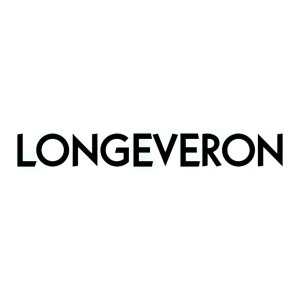Longeveron® Announces U.S. FDA Approval of IND Application for a Phase 2 Pivotal Registration Study Evaluating Laromestrocel as a Treatment of Pediatric Dilated Cardiomyopathy (DCM)
Rhea-AI Summary
Longeveron (NASDAQ: LGVN) has received FDA approval for its Investigational New Drug (IND) application to conduct a Phase 2 pivotal registration study of laromestrocel for treating pediatric dilated cardiomyopathy (DCM). The trial is expected to begin in the first half of 2026.
Laromestrocel, a proprietary allogeneic cell therapy derived from mesenchymal stem cells, aims to address a critical unmet need in DCM treatment, where nearly 40% of children require heart transplants or die within two years of diagnosis. The condition affects at least 100,000 children worldwide, with DCM being the most common form of cardiomyopathy in children, representing 50-60% of all pediatric cardiomyopathy cases.
The FDA's approval allows Longeveron to proceed directly to a Phase 2 pivotal registration trial, potentially accelerating the development timeline for this innovative stem cell therapy approach to treating pediatric cardiovascular diseases.
Positive
- FDA approval to proceed directly to Phase 2 pivotal registration trial, potentially accelerating development timeline
- Addresses significant unmet medical need affecting 100,000 children worldwide
- Novel stem cell therapy approach with potential to repair damaged heart tissue
- Multiple potential mechanisms of action that may lead to anti-inflammatory and pro-vascular regenerative responses
Negative
- Clinical trial not starting until first half of 2026
- Efficacy of the treatment still needs to be proven in clinical trials
- Current high mortality rate of 40% within two years of diagnosis indicates challenging treatment landscape
News Market Reaction 1 Alert
On the day this news was published, LGVN gained 28.68%, reflecting a significant positive market reaction.
Data tracked by StockTitan Argus on the day of publication.
- Accepted IND application allows for development program to move directly to a Phase 2 pivotal registration clinical trial
- Phase 2 clinical trial initiation anticipated in first half of 2026
- Pediatric cardiomyopathies affect at least 100,000 children worldwide
- Effective treatment options are limited, with nearly
40% of children with DCM requiring a heart transplant or dying within two years of diagnosis
MIAMI, July 08, 2025 (GLOBE NEWSWIRE) -- Longeveron Inc. (NASDAQ: LGVN), a clinical stage regenerative medicine biotechnology company developing cellular therapies for life-threatening and chronic aging-related conditions, today announced that the U.S. Food and Drug Administration (FDA) has approved the Investigational New Drug (IND) application for its stem cell therapy laromestrocel as a potential treatment for pediatric dilated cardiomyopathy (DCM). The accepted IND application provides for moving directly to a single Phase 2 pivotal registration clinical trial.
“We are gratified to advance laromestrocel into clinical development for pediatric dilated cardiomyopathy, a rare, progressive, life-threatening disease with no current effective treatment,” said Nataliya Agafonova, M.D., Chief Medical Officer of Longeveron. “With nearly
Laromestrocel is a proprietary, scalable, allogeneic, investigational cellular therapy derived from mesenchymal stem cells (MSCs) with multiple potential mechanisms of action that may lead to anti-inflammatory, pro-vascular regenerative responses, and therefore may have broad application for a range of rare and aging related diseases.
“The FDA approval of this laromestrocel IND is an important milestone for pediatric cardiovascular treatment,” said Barry Byrne, M.D., Ph.D, Associate Chair of Pediatrics and Director of the Powell Gene Therapy Center at the University of Florida. “Current treatment for DCM focuses on managing symptoms, improving heart function, and preventing complications rather than addressing the underlying cause or causes. Many therapeutic agents with known efficacy in adults lack the same evidence in children. Longeveron’s innovative stem cell therapy approach, with the possibility for stem cells to repair damaged heart tissue, is a potential groundbreaking development in the treatment of children with cardiovascular diseases.”
DCM occurs when the muscles in one of more of the heart chambers become enlarged or stretched (dilated). The other chambers of the heart need to work harder to compensate for the affected chambers, and may also become dilated and enlarged. As the condition progresses, the heart becomes weaker, and it becomes more difficult to pump blood through the body. This can lead to congestive heart failure causing a build-up of fluid in the lungs, liver, abdomen, and lower legs. In the majority of cases, the exact cause of DCM cannot be determined (idiopathic cardiomyopathy).
DCM is the most common form of cardiomyopathy in children. About 50 to 60 percent of all pediatric cardiomyopathy cases are diagnosed as dilated. According to the Pediatric Cardiomyopathy Registry, DCM is reportedly more common in boys than girls. Although all age groups are affected, studies show that DCM is more common in infants (before age 1) than in older children.
About Longeveron Inc.
Longeveron is a clinical stage biotechnology company developing regenerative medicines to address unmet medical needs. The Company’s lead investigational product is laromestrocel (Lomecel-B™), an allogeneic mesenchymal stem cell (MSC) therapy product isolated from the bone marrow of young, healthy adult donors. Laromestrocel has multiple potential mechanisms of action encompassing pro-vascular, pro-regenerative, anti-inflammatory, and tissue repair and healing effects with broad potential applications across a spectrum of disease areas. Longeveron is currently pursuing three pipeline indications: hypoplastic left heart syndrome (HLHS), Alzheimer’s disease, and Aging-related Frailty. Laromestrocel development programs have received five distinct and important FDA designations: for the HLHS program - Orphan Drug designation, Fast Track designation, and Rare Pediatric Disease designation; and, for the AD program - Regenerative Medicine Advanced Therapy (RMAT) designation and Fast Track designation. For more information, visit www.longeveron.com or follow Longeveron on LinkedIn, X, and Instagram.
Forward-Looking Statements
Certain statements in this press release that are not historical facts are forward-looking statements made pursuant to the safe harbor provisions of the Private Securities Litigation Reform Act of 1995, which reflect management’s current expectations, assumptions, and estimates of future operations, performance and economic conditions, and involve known and unknown risks, uncertainties, and other important factors that could cause actual results, performance, or achievements to differ materially from those anticipated, expressed, or implied by the statements made herein. Forward-looking statements are generally identifiable by the use of forward-looking terminology such as “anticipate,” “believe,” “contemplate,” “continue,” “could,” “estimate,” “expects,” “intend,” “looks to,” “may,” “on condition,” “plan,” “potential,” “predict,” “preliminary,” “project,” “see,” “should,” “target,” “will,” “would,” or the negative thereof or comparable terminology, or by discussion of strategy or goals or other future events, circumstances, or effects and include, but are not limited to, statements about the various below-listed factors. Factors that could cause actual results to differ materially from those expressed or implied in any forward-looking statements in this release include, but are not limited to, our cash position and need to raise additional capital, the difficulties we may face in obtaining access to capital, and the dilutive impact it may have on our investors; our financial performance, and ability to continue as a going concern; the period over which we estimate our existing cash and cash equivalents will be sufficient to fund our future operating expenses and capital expenditure requirements; the ability of our clinical trials to demonstrate safety and efficacy of our product candidates, and other positive results; the timing and focus of our ongoing and future preclinical studies and clinical trials, and the reporting of data from those studies and trials; the size of the market opportunity for certain of our product candidates, including our estimates of the number of patients who suffer from the diseases we are targeting; our ability to scale production and commercialize the product candidate for certain indications; the success of competing therapies that are or may become available; the beneficial characteristics, safety, efficacy and therapeutic effects of our product candidates; our ability to obtain and maintain regulatory approval of our product candidates in the U.S. and other jurisdictions; our plans relating to the further development of our product candidates, including additional disease states or indications we may pursue; our plans and ability to obtain or protect intellectual property rights, including extensions of existing patent terms where available and our ability to avoid infringing the intellectual property rights of others; the need to hire additional personnel and our ability to attract and retain such personnel; and our estimates regarding expenses, future revenue, capital requirements and needs for additional financing.
Further information relating to factors that may impact the Company’s results and forward-looking statements are disclosed in the Company’s filings with the Securities and Exchange Commission, including Longeveron’s Annual Report on Form 10-K for the year ended December 31, 2024, filed with the Securities and Exchange Commission on February 28, 2025, its Quarterly Reports on Form 10-Q, and its Current Reports on Form 8-K. The Company operates in highly competitive and rapidly changing environment; therefore, new factors may arise, and it is not possible for the Company’s management to predict all such factors that may arise nor assess the impact of such factors or the extent to which any individual factor or combination thereof, may cause results to differ materially from those contained in any forward-looking statements. The forward-looking statements contained in this press release are made as of the date of this press release based on information available as of the date of this press release, are inherently uncertain, and the Company disclaims any intention or obligation, other than imposed by law, to update or revise any forward-looking statements, whether as a result of new information, future events, or otherwise.
Investor and Media Contact:
Derek Cole
Investor Relations Advisory Solutions
derek.cole@iradvisory.com
A photo accompanying this announcement is available at https://www.globenewswire.com/NewsRoom/AttachmentNg/e9e96d9c-d6c3-4aec-ba85-36631b520211









